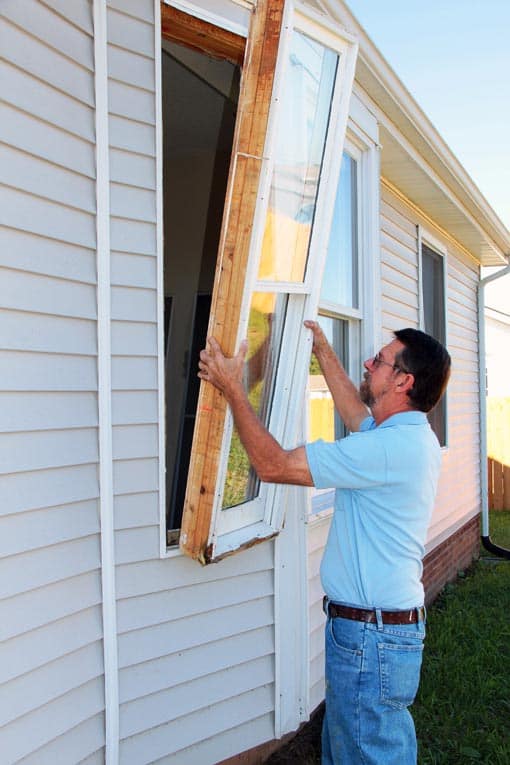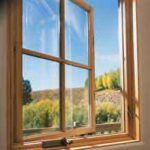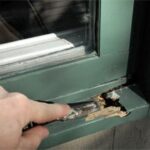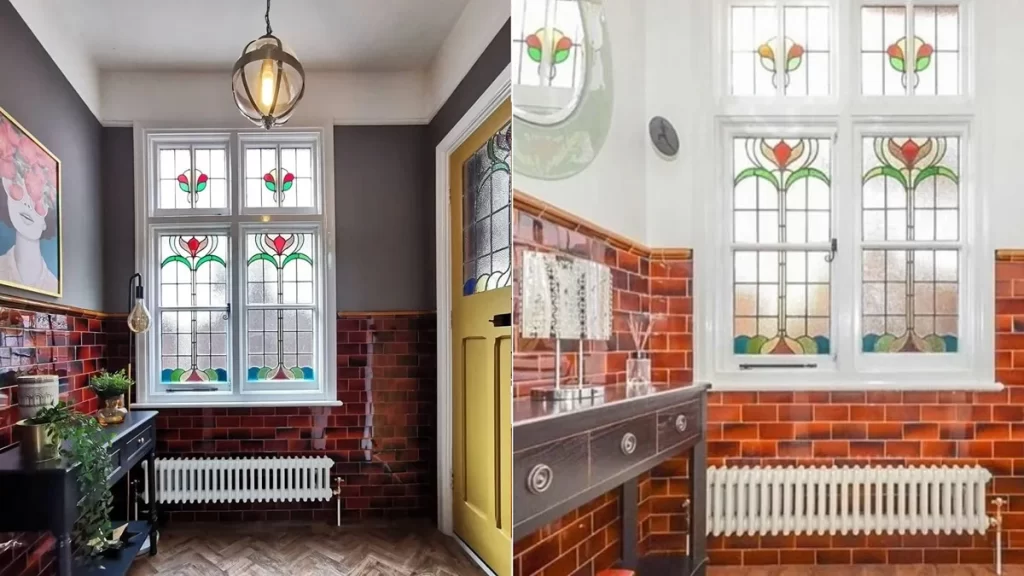This expert article offers diagrams, a glossary, and a discussion of how windows are built, including the double-hung window.
At first glance, a window looks like a pretty simple piece of equipment. It has a frame, glass, and some basic hardware. But, if you look a little closer, you’ll find there’s much more than first meets the eye.
A window must be designed to allow in light and views and, in many cases, ventilation, yet seal out the weather. It must shed heavy rain without leaking and block powerful winds. And, if it’s an operable window, it must open and close easily. To handle these tasks effectively, the typical window has many parts and a surprisingly complex construction.
A double-hung wood window, shown above, has movable upper and lower sashes that slide in tracks in the side jambs. A variety of specially milled pieces go in to making up the jambs, frame, casing, and sashes.
The window frame is the enclosure that holds the main parts of a window—called window sashes—in place. Window sashes may be fixed or operable. Obviously, in a fixed window, the sashes don’t move.
Window frames and sashes are made from a variety of materials, including wood, aluminum, vinyl, steel, or wood-clad vinyl or aluminum. Each has its benefits and drawbacks.
Operable windows employ several methods for window sash movement. With single- and double-hung windows, the sashes slide up and down. With casement windows, they swing in or out. Sliders slide. And so forth. (For more about window types, see Types of Windows.)
Some windows have real divided lites (also called “lights” or panes) held in place by muntins; others have snap-in wood grilles that imitate the look of divided lites. Though snap-in grilles don’t look as substantial as real muntins, windows with these are less expensive and easier to clean than real divided-lite windows because they’re a single sheet of glass.
The type of glass in a window has a great deal to do with how the window performs. (For more about this, see the links below.)
A nail-on metal window, shown at left, has many of the same parts and pieces as a wood window, except that only some of them are formed as single parts. The flange around the perimeter is made to nail on to the exterior wall sheathing for easy mounting during construction.
For unbiased help buying windows, see the Windows Buying Guide.
NEXT SEE:



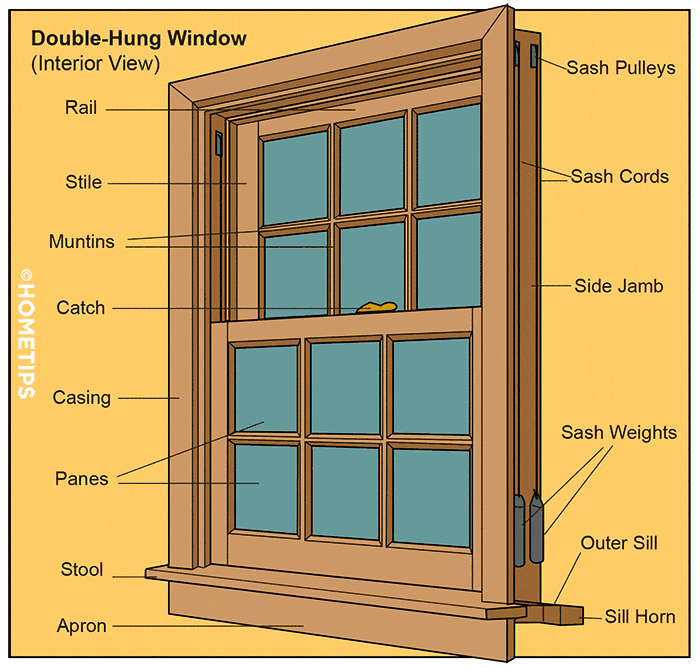
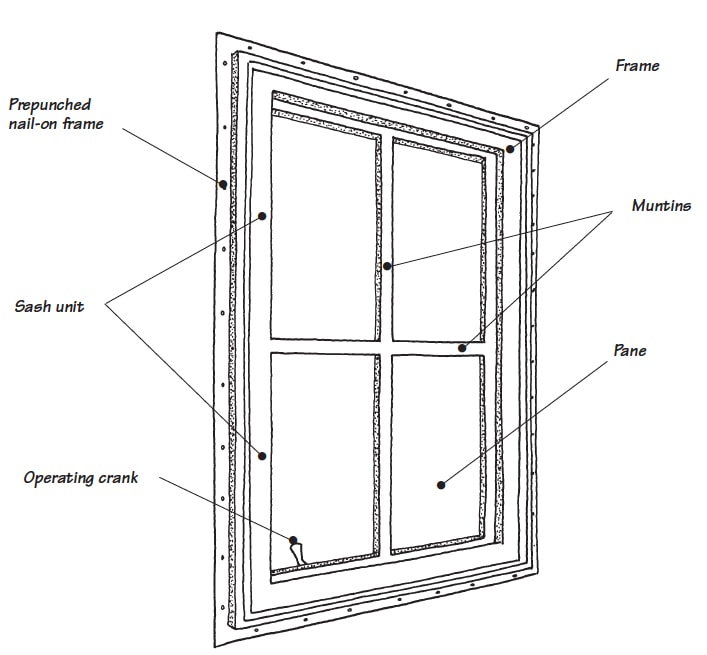

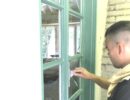
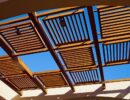
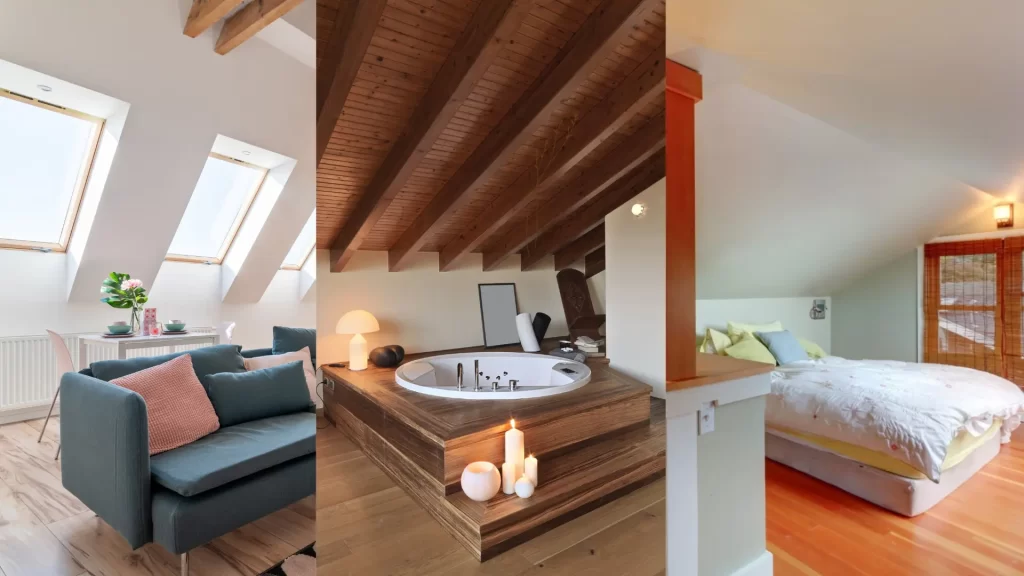
 Don Vandervort writes or edits every article at HomeTips. Don has:
Don Vandervort writes or edits every article at HomeTips. Don has:
